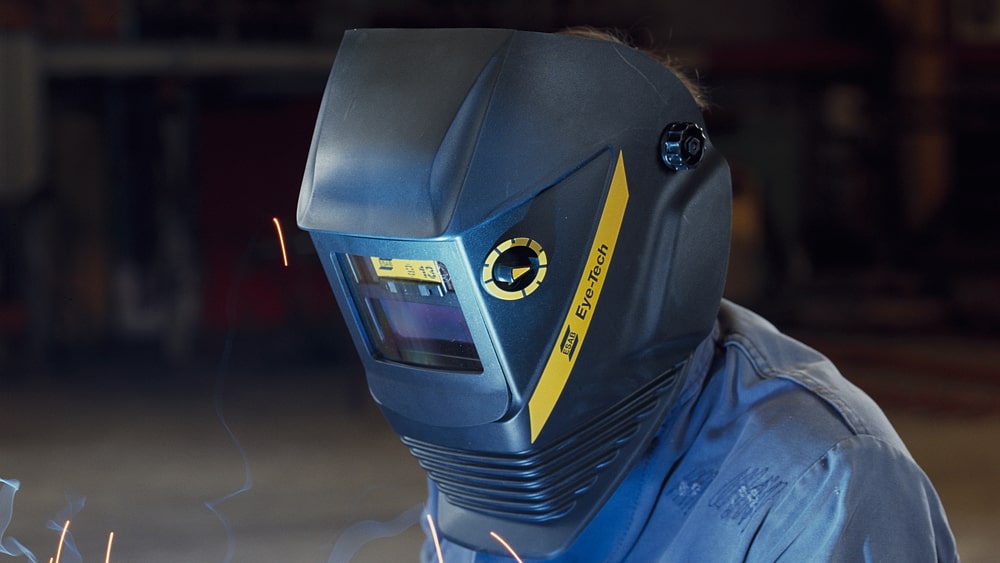Yes, cordless tools can be safely used in environments with combustible materials if they are designed to be intrinsically safe and certified for use in hazardous locations. The use of cordless tools eliminates the risk of spark or flame production from electrical connections, reducing the potential for ignition in such environments.
These tools are specially designed with features like sealed housings, non-sparking components, and waterproofing to prevent any potential hazards. Additionally, they are often equipped with protective measures such as thermal sensors or shutdown mechanisms to prevent overheating. Cordless tools also offer the advantage of portability and flexibility, making them ideal for use in various hazardous environments, including those with combustible materials.

Credit: www.exponent.com
Why Safety Is A Concern When Using Cordless Tools In Combustible Environments
Why Safety Is a Concern When Using Cordless Tools in Combustible Environments
Dangers of sparks and heat generation: One of the main concerns when using cordless tools in environments with combustible materials is the potential for sparks and heat generation. The friction caused by the tool’s moving parts can generate sparks, which can ignite flammable gases or substances present in the surroundings. These sparks can quickly escalate into a fire or explosion, putting the safety of workers and the facility at risk.
Risk of igniting flammable gases: Cordless tools, although convenient, can pose a significant risk in areas where flammable gases are present. Even a small spark or source of heat can trigger an explosion, leading to severe injuries and property damage. It is critical for workers and employers to be aware of the potential risks and take necessary precautions to prevent accidents.
Importance of risk assessment and mitigation: To ensure safe working conditions, a thorough risk assessment should be conducted before using cordless tools in environments with combustible materials. This assessment should identify potential hazards, evaluate the likelihood and severity of accidents, and implement appropriate risk mitigation measures. This may include using intrinsically safe tools, implementing proper ventilation systems, conducting regular safety training, and enforcing strict safety protocols.
Understanding The Risks Associated With Cordless Tools In Combustible Environments
Using cordless tools in environments with combustible materials can pose serious risks if proper precautions are not taken. Several factors contribute to these risks, including the heat generated by the tool, the type of battery used, and the potential for sparks.
Heat generated by cordless tools can reach high levels during use, especially in heavy-duty applications. This heat can ignite combustible materials, leading to fires or explosions. Similarly, the type of battery used in the tool can also affect the risk. Lithium-ion batteries, although popular for their performance and quick charge times, have a higher risk of thermal runaway and combustion compared to other battery types.
Another risk factor to consider is the potential for sparks. These sparks can occur during tool operation or even while changing batteries. Even a small spark can ignite flammable substances in the environment.
Identifying hazardous environments is crucial to ensuring safe tool usage. Areas with fuels, solvents, vapors, or dust particles in the air are particularly high-risk zones.
Regulations and guidelines exist to mitigate these risks and promote safe usage of cordless tools in combustible environments. Adhering to these rules, such as using Class I, Division 1 rated tools, can reduce the chances of accidents and ensure the safety of workers and the surrounding environment.
Best Practices For Safely Using Cordless Tools In Combustible Environments
Cordless tools can be used safely in environments with combustible materials by following these best practices. Ensure the tools have explosion-proof casing, use non-sparking batteries, maintain proper ventilation, minimize fire hazards, and provide safety training for workers.
Choose Intrinsically Safe Tools:
When working in environments with combustible materials, it is crucial to select intrinsically safe tools. These tools are specifically designed to minimize the risk of sparks and heat generation, reducing the likelihood of ignition.
Proper Battery Selection And Handling:
Using appropriate batteries for cordless tools is essential. Ensure that the batteries are certified for use in potentially hazardous areas. Always follow the manufacturer’s instructions for correct battery installation and removal.
Minimizing Sparks And Heat Generation:
To prevent accidents, it is necessary to minimize sparks and heat generation while using cordless tools. Opt for tools with brushless motors, as they produce less heat. Take extra precautions when working in enclosed spaces.
Using Spark-resistant Materials:
When working in combustible environments, it is advisable to use tools made from spark-resistant materials. These materials reduce the chances of generating sparks that could ignite flammable substances.
Maintaining Tool Cleanliness:
Regularly clean cordless tools to remove dust, debris, and flammable residues that might accumulate. Proper tool cleanliness helps prevent the build-up of potential ignition sources.
Risk Assessment And Implementing Control Measures:
Prior to using cordless tools in environments with combustible materials, perform a comprehensive risk assessment and determine appropriate control measures. This includes establishing protocols for tool usage, training workers on best practices, and implementing necessary precautions.
Evaluating The Safety Features Of Cordless Tools For Use In Combustible Environments
When selecting cordless tools to be used in environments with combustible materials, it is crucial to evaluate the safety features of these tools. One aspect to consider is the explosion-proof and intrinsically safe designs. Cordless tools with explosion-proof designs are specifically built to prevent ignition in hazardous areas. On the other hand, intrinsically safe designs ensure that the tools possess low energy levels that cannot ignite a combustible atmosphere.
Another important factor to consider is certifications and ratings. Certain certifications, such as ATEX and UL, indicate that the tools have undergone rigorous testing to ensure their safety in hazardous environments. Additionally, ratings like IP (Ingress Protection) ratings provide information about the tool’s protection against solid particles and liquids.
When choosing cordless tools for use in environments with combustible materials, prioritizing safety is essential. By understanding the different safety features, certifications, and ratings, you can make informed decisions and mitigate the risks associated with using cordless tools in hazardous environments.
Maintaining Safe Practices When Using Cordless Tools In Combustible Environments
Maintaining Safe Practices When Using Cordless Tools in Combustible Environments
Regular inspection and maintenance are crucial to ensure the safe use of cordless tools in environments with combustible materials. Conduct frequent inspections to identify any potential issues or damage to the tools or batteries. Replace or repair damaged components promptly.
Safe storage and transportation of tools and batteries are essential to minimize the risk of accidents. Store tools and batteries in designated areas away from combustible materials and sources of ignition. Use protective cases or covers to prevent damage and short circuits during transportation.
Proper training and education for users are vital for the safe use of cordless tools. Provide comprehensive training on the correct handling, operation, and maintenance of the tools. Emphasize the importance of following safety guidelines and procedures to prevent accidents.
Establish emergency response and evacuation protocols to address any potential incidents. Ensure all users are aware of the procedures and have access to fire extinguishers and other safety equipment in case of emergencies.
Case Studies: Safe Use Of Cordless Tools In Combustible Environments
Cordless tools can be used safely in combustible environments. Case studies demonstrate the precautions and best practices to prevent accidents.
Examining Real-world Scenarios And Outcomes
In environments with combustible materials, the safe use of cordless tools is of paramount importance. Real-world case studies provide valuable insights into the practices and outcomes associated with this crucial aspect.
These studies highlight the lessons learned from accidents or near misses, shedding light on the potential risks and the importance of adherence to safety protocols. They serve as a reminder of the dire consequences that can arise from negligence or oversight.
On the other hand, these case studies also highlight success stories where organizations have successfully implemented safe practices while using cordless tools in combustible environments. These success stories demonstrate the significance of meticulous planning, employee training, and adherence to stringent safety guidelines.
By examining these real-world scenarios and outcomes, professionals can gain valuable insights and learn from both the mistakes and accomplishments of others. This knowledge is instrumental in ensuring the safe use of cordless tools in environments with combustible materials.
Conclusion: Balancing Convenience And Safety In Combustible Environments
The use of cordless tools in environments with combustible materials is a topic that requires careful consideration. While these tools offer convenience and mobility, the priority should always be on safety. As technology continues to develop, tool manufacturers have been investing in research and development to improve the safety features of cordless tools. By incorporating safety measures such as spark control, temperature monitoring, and explosion-proof designs, they offer a safer alternative to traditional power tools.
However, it is important to note that even with these advancements, a comprehensive risk assessment should always be conducted before using cordless tools in combustible environments. This assessment should include an evaluation of the specific hazards present, as well as the appropriate safety measures that need to be implemented.
Ultimately, it is possible to safely use cordless tools in environments with combustible materials, but it requires a balance between convenience and safety. By understanding the risks, following proper safety protocols, and using tools that are designed with safety in mind, workers can minimize the potential for accidents or incidents involving combustible materials.
Frequently Asked Questions Of Can Cordless Tools Be Safely Used In Environments With Combustible Materials?
Can Cordless Tools Be Safely Used In Environments With Combustible Materials?
Yes, cordless tools can be safely used in environments with combustible materials. Unlike corded tools, cordless tools don’t have wires that can generate sparks. Additionally, modern cordless tools are designed with safety features such as spark arresters and sealed battery compartments to minimize the risk of ignition.
However, it’s still important to follow proper safety procedures and use tools that are specifically rated for hazardous environments.
Conclusion
In hazardous environments, it is crucial to prioritize safety precautions, especially when working with combustible materials. Cordless tools offer convenience and mobility, but can they be safely used in such environments? The answer lies in careful risk assessment, proper training, and adherence to safety guidelines.
While cordless tools can be used safely, it is essential to choose appropriate tool models, ensure proper maintenance, and regularly inspect for any potential hazards. By understanding the risks and taking necessary precautions, workers can confidently utilize cordless tools in combustible material environments.

